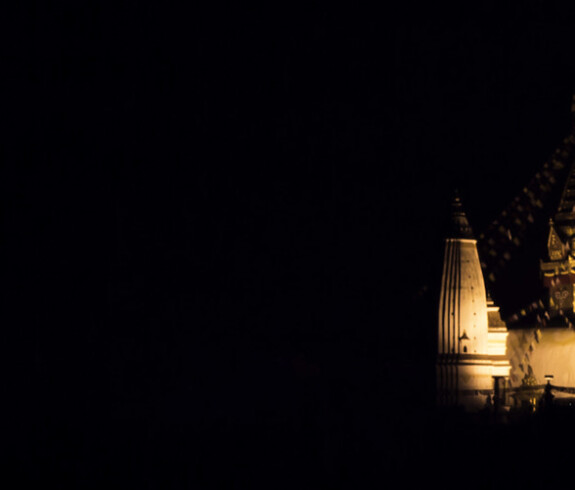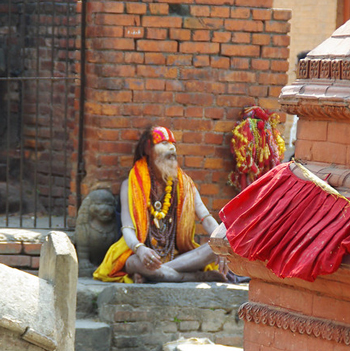Swayambhunath, famous as the Monkey Temple, is a Nepalese temple in Kathmandu. Buddhists from all over the world visit this magnificent Pilgrimage location, not just from Nepal. Likewise, the energy surrounding this Temple is incredible. When you visit this Temple, you will get a nostalgic feeling and a sense of satisfaction. It is also a UNESCO World Heritage Site known for its architecture.
Moreover, the tranquility of Swayambhunath demonstrates the ancient energy. Swayambhunath is northwest of Kathmandu, between the valley and the hills. The majestic Swayambhunath does have features that draw pilgrims and visitors.
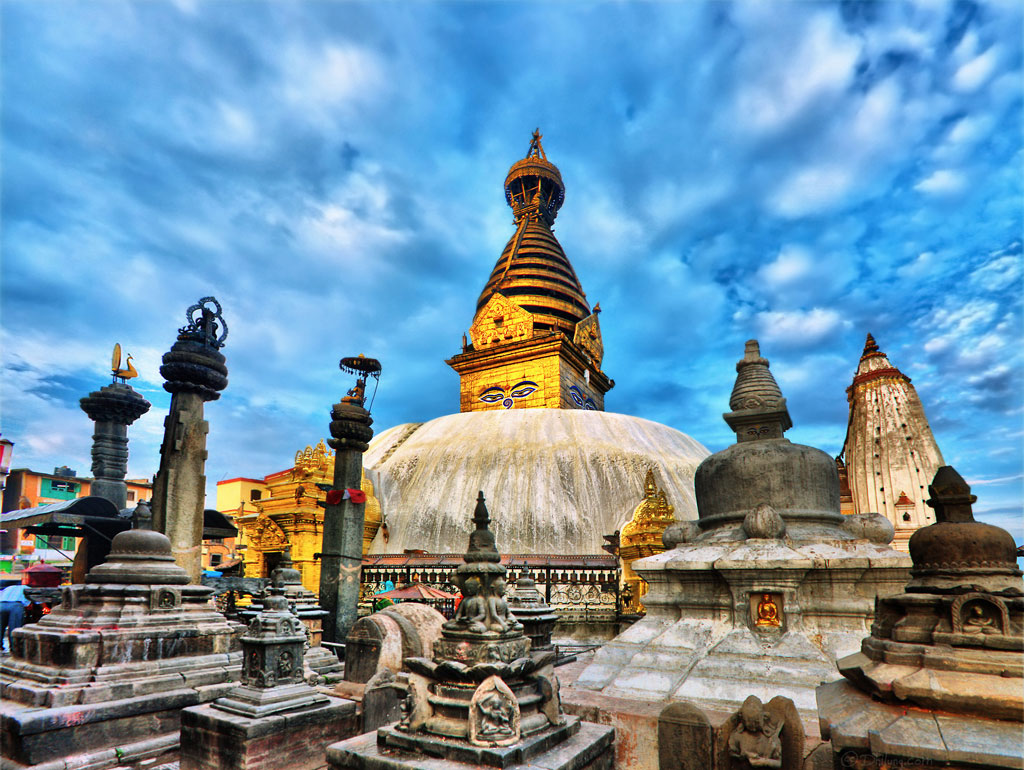
What do we know about the history of Swaymbhunath?
Swayambhunath, one of Buddhism’s holiest sites, reflects the face of Buddhism and Hinduism. King Mandeva constructed the magnificent Temple. This lovely Temple’s architecture and craftsmanship are reminiscent of a bygone era.
The Temple dates back to 406 AD. Before the construction of this Temple, numerous well-known figures worked on renovations.
Furthermore, by the 13th century, this Temple had established itself as an important Buddhist pilgrimage center. Visitors came from all over the world. Furthermore, the refurbishment was done entirely by 2010.
Similarly, 20 kilograms of gold are put on the Temple’s pinnacle. The strong earthquake in 2015 demolished part of the Temple. On the other hand, the spiritual Temple reappears with the same construction and design.
The stupa resembles a lotus flower in structure. Additionally, saints, monks, kings, and others have built monasteries, idols, temples, and sculptures in the last two thousand years. They now wholly encircle the original stupa as well as the entire mountaintop.
Pilgrims and the curious now climb the 365 flagstone stairs of King Pratap. Even if you have no interest in religion or history, the antics of the monkeys who inhabit the temples and stores are entertaining — they slide down the railings of the steps.
Furthermore, the views of Kathmandu are as stunning as the ascent. According to Nepali folklore, the monkeys are a bit low from the lice in Manjushree’s hair that mutated into monkeys.
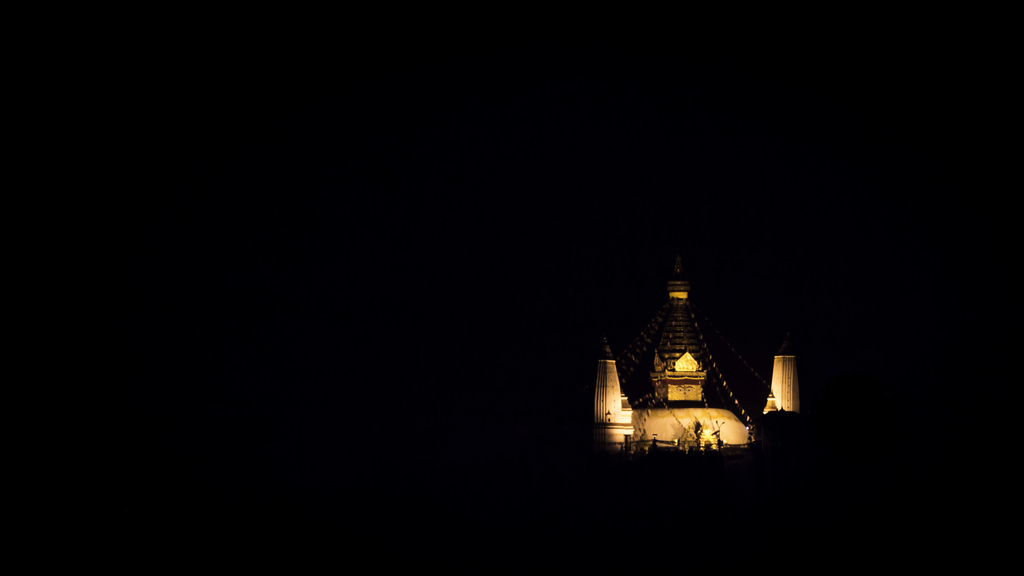
Architecture & Attractiveness
The surface of the stupa, on the other hand, appears to be a cube. Similarly, you will witness all four sides of a Toran with a pentagon. In addition, observing the pair of balls around the eyes will also feel good. This implies that God exists simultaneously in all places.
Similarly, you’ll notice another eye over each set of eyes, the eye of wisdom. Two lion statues guard the entrance as you travel past the stairs leading to the Temple. It’s fascinating to watch this unfold.
Furthermore, from the summit of Swaymbhunath Temple, you can see a beautiful view of Kathmandu Valley.
A massive gate with a Tibetan prayer wheel 12 feet tall will also be visible. The size of the wheel will blow your mind. Furthermore, soothing bell sounds can be heard throughout the sanctuary. The beauty of Swayambhunath Temple conjures up memories of a bygone era.
Similarly, there are countless little spinning wheels beside the gate. These small wheels are for praying and wishing and asking for anything. Similarly, three 17th-century Buddha statues can be found just before the stairwell.
Moreover, the statues range in size from medium to large. Many etched Tibetan stones can also be found along the stairwell. Small shops can also be found where travelers can purchase stone reproductions. The stairwell will lead you into a woodland area teeming with monkeys.
Furthermore, this staircase is the most preferred means for pilgrims entering the stupa on foot. Another entry with fewer steps can be located on the west side of the stupa if you are ready to drive. The main stupa is a white hemispheric structure. The stupa is furnished with several statues and artifacts.
Likewise, a dish of gemstones is placed under the cover on top of the spire. There is a slew of other shrines surrounding the main structure.
When is the best time to visit the Swayambhunath Temple?
With a quick shower, you can go to Swayambhunath in the morning. Similarly, various ceremonies and pilgrims can be found throughout the compound at this time.
During the daytime, the audience will gradually increase. The Temple is full of residents and visitors if you visit on Saturday. Saturday is the country’s day off, and this Temple offers a variety of exciting events.
Moreover, the Temple itself has a powerful presence that you can sense. The relaxing ambiance and surroundings make you feel even better.
Visiting the Temple during the festive season is the most acceptable time. It is also a fantastic time to visit the Gunla festival in August or September.
It would, however, be during the rainy season, making sightseeing and other activities difficult for guests to enjoy. April to May is Buddha Jayanti, and February to March is Lohar. So now is an excellent opportunity to visit this lovely spiritual Temple.
Spring and autumn are the finest seasons to visit Kathmandu because of the weather. It is best to visit the Temple between September and mid-May.
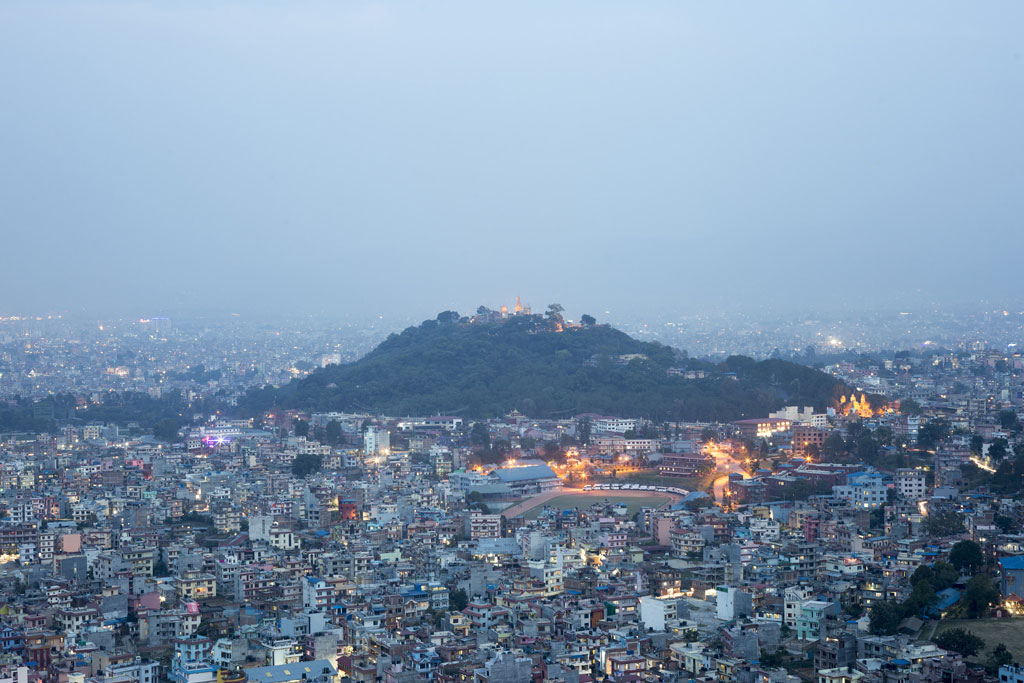
Around-the-Area Tourist Attractions
The number of tourist attractions represents Swayambhunath. It is simple to visit them and take in the views. A Dharmadhatu mandala can also be found on the side of the stupa. The gold-plated Vajra, a priestly sign, is hung on it. The Vajrayana Buddhist symbol is this.
In addition, other monasteries can be found in the area. In addition, you will see Shantipur, a 1500-year-old temple. Two bullet-shaped temples built by Pratap Malla can also be found there.
Both Pratapur and Anantapur are temples that commemorate Pratap Malla’s triumph. Shree Karma Raj Mahabir Monastery is located there as well. During the evening, you will see Monks reciting ritual chants.
Swayambhunath Stupa Directions
The Temple is at Kathmandu’s northwest corner. Swayambhunath is easily accessible by bus or taxi. You can also take a stroll to get there, which is more exciting and adventurous.
Taxis cost roughly USD 4 to USD 5, whereas buses cost less than USD 1. The distance from the city’s central heart is about 5 kilometers.
Time to Visit
The Temple opens seven days a week. Every day, many pilgrims from various locations come to visit. Only in a storm or other natural disaster Temple won’t open.
Furthermore, Swayambhunath is open all year. You are welcome to come at any time. It would be best to go early in the morning to appreciate the gorgeous ambiance and spiritual vibe.
Similarly, a large number of monkeys surround the shrine. As a result, this Temple is open 24 hours a day, seven days a week. As a result, paying a visit will not be a problem. It is preferable to visit in the morning rather than the evening.
You can also enjoy a magnificent evening environment while listening to Buddhist chanting.
Entrance Fee
This Temple welcomes visitors of all races and religions. For this temple visit, there are no obstacles or limitations. Furthermore, you must pay a small entrance fee before entering the shrine.
Moreover, children and domestic and local people do not have to pay the entrance fee. Similarly, foreign visitors pay a small fee. The most significant advantage of this sanctuary is that there are no entrance or exploration limitations.
Foreigner’s entrance charge: NPR 200
Entrance charge for locals: Free
SAARC Citizen Entrance Charge: NPR 50
